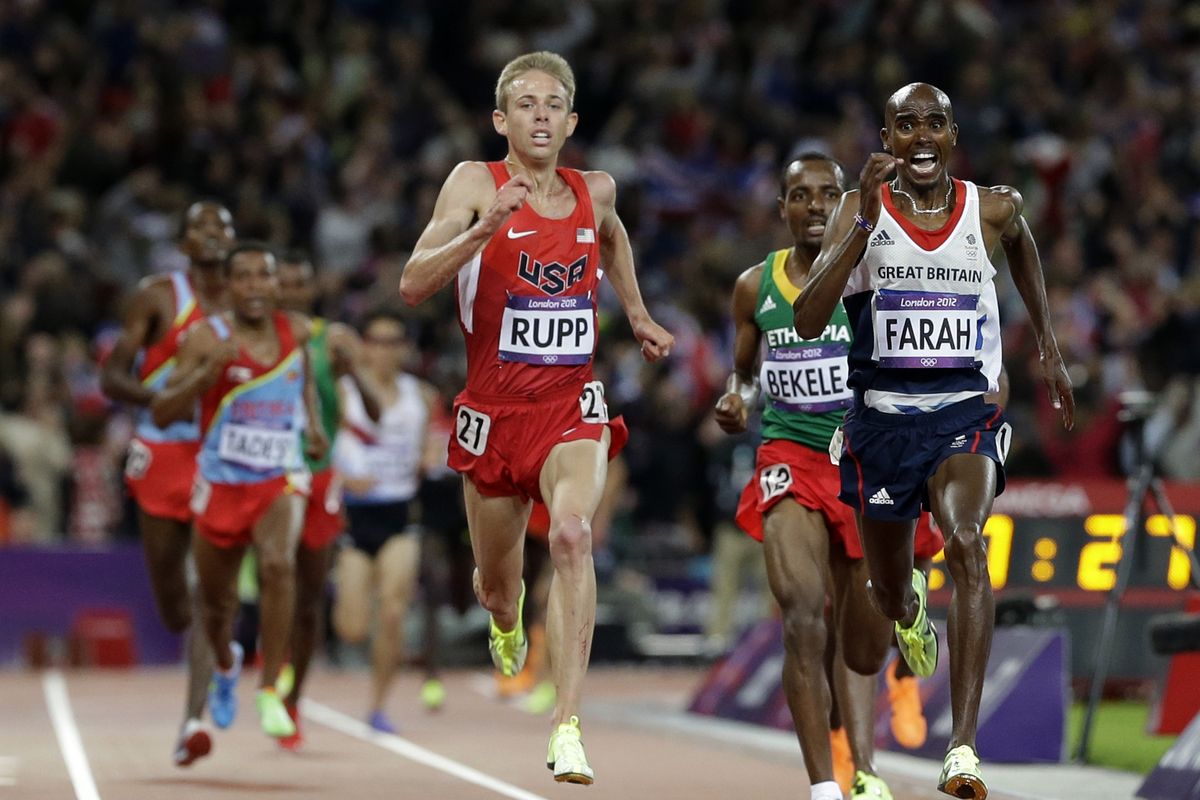Olympics: Partnership pays off for Farah, Rupp

LONDON – Down the track he came with the stadium’s howling, gale-force British hope filling every molecule of air he swallowed, his best friend and training partner strides ahead of him while Galen Rupp kept running for his life.
The thunderous clangor was for Mo Farah, Britain’s own. He had the 10,000-meter race lead. Rupp, the bumpkin-faced interloper from Oregon, had Ethiopians to out-charge. It was the scene Rupp’s coach set a day earlier with spectral clairvoyance: You have a chance to win, Alberto Salazar told him. You have to do it in the final 100 meters.
So as they crossed the line, one after another, Farah’s eyes bulged as he slapped his clean-shaven scalp. Rupp screamed for his friend through the din – “Hey! Mo!” – and seized him in an embrace. One had become a national hero, Britain’s first 10,000 champion. The other became only the third American, ever, to earn an Olympic medal in this race.
“It’s so awesome to see it come true,” Rupp said after taking the silver with a time of 27:30.90, 0.48 seconds behind Farah. “You dream about this day for a really long time.”
Rupp joined Billy Mills (gold in 1964) and Lewis Tewanima (silver in 1912) as the only American medalists in the event. It was the culmination of Salazar’s “Oregon Project,” aiming to put American distance runners on podiums long dominated by runners from African nations.
That was more than a decade ago, and it unfolded in the familiar way Saturday: Farah and Rupp and the Bekele brothers of Ethiopia tangled in the stretch.
Except there would be no percussive kick from the Ethiopians this time. Farah, the world champion at 5,000 meters, and Rupp, only the second non-African to break the 27-minute barrier in the 10,000, held firm.
“We thought they could out-sprint anybody in the race,” Salazar said after the race. “We weren’t going to try and win until the last 400, 200. Our speed workouts had been going well. We didn’t care if the race was fast or slow.”
Appropriately enough (given the host country), Rupp got by with a little help from his friend. Farah and Rupp strategized before the race to work their way through patiently and then, in the final laps, consider it every man for himself.
But it was Rupp who got antsy midway through, wondering if he should make a move, when he felt a tap on his shoulder.
“Relax, mate, they’re going to come back,” he recalled Farah telling him. “We have to play it cool now and save everything for the finish.”
“I’ve been the beneficiary of our relationship,” Rupp said later. “I’ve been able to train with the best distance runner in the world. Mo was kind of the missing piece.”
He could celebrate with him, too. Farah, born in Somalia but a British resident since he was 8, deemed it “the best moment of my life.” Rupp knew the feeling. But there was satisfaction, too, in adhering to the plan even as it was riddled with setbacks, like the seventh-place finish in the 10,000 at 2011 world championships.
It was a long way to go in so many ways, so many details to tend to, so much pressure to shed with every stride.
“A lot of people get caught up thinking they have to do something amazing here,” Rupp said.
Then sometimes they do anyway, and they find a friend across the finish line to grab hold of, while tens of thousands of voices join in the blissful disbelief at what they’d just done.